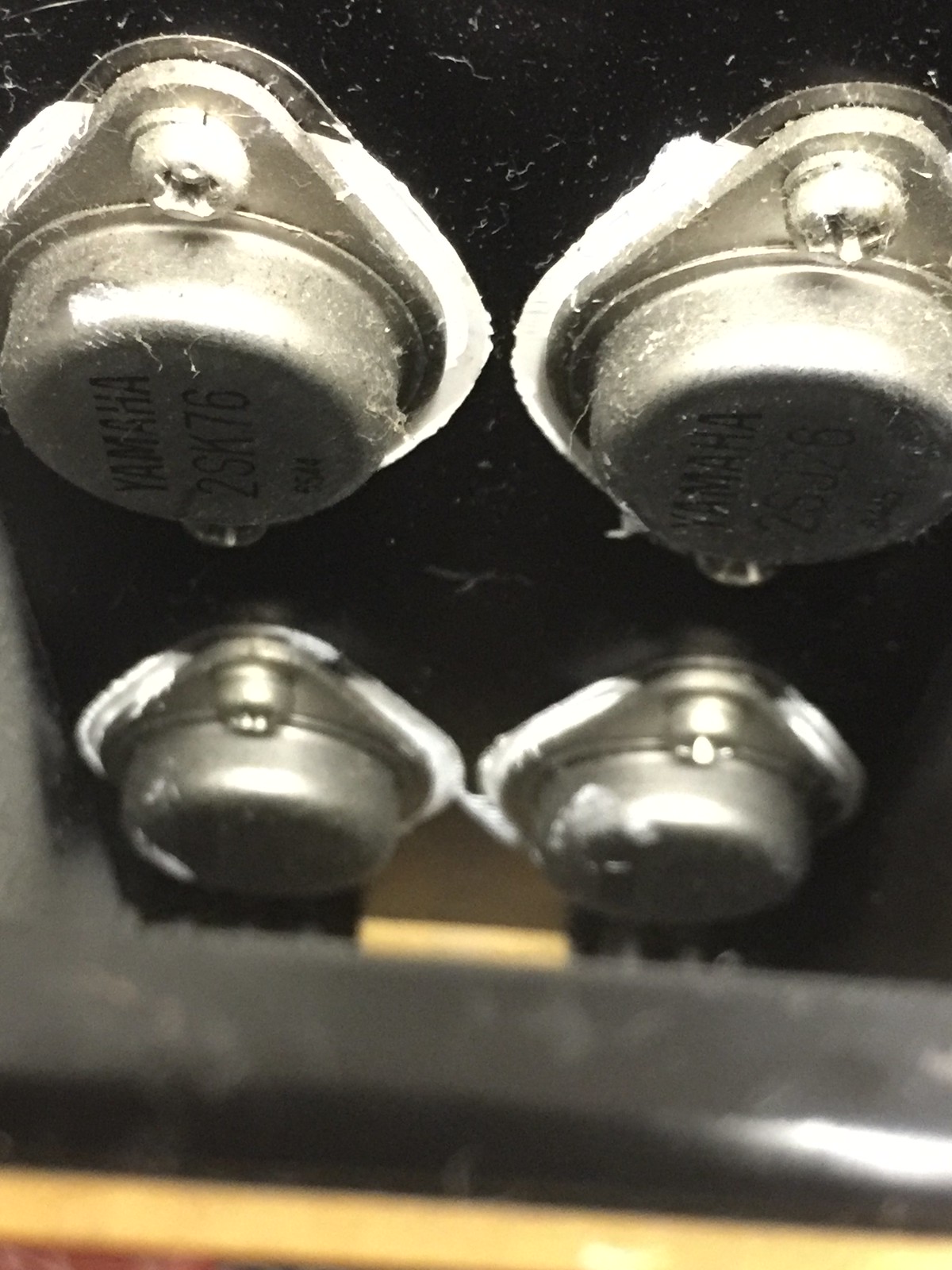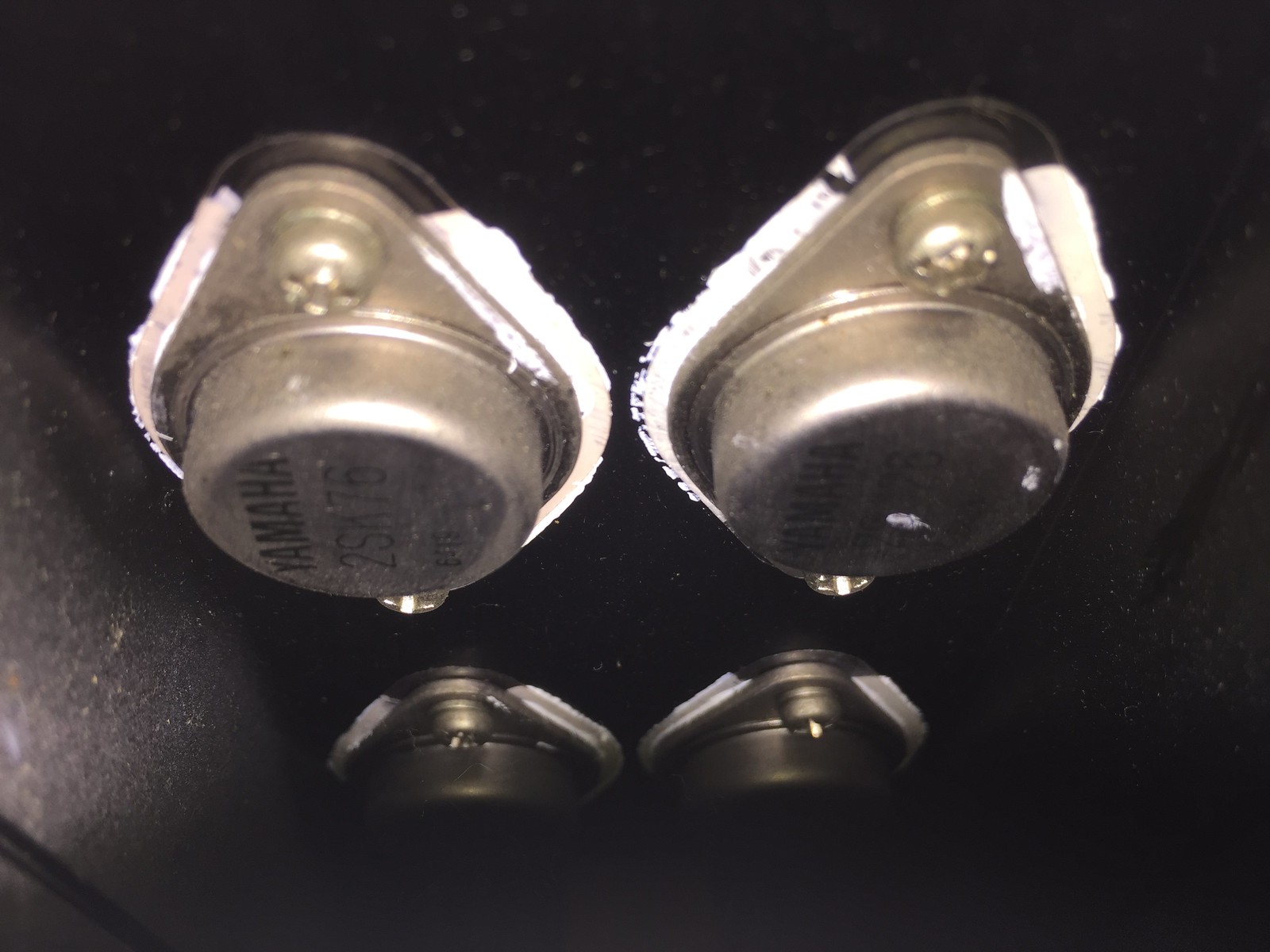Hi Everyone, I just got in my possession a really clean B2 with a broken input board and switch.
I traded for this amp with a spare Sony G-90 CRT Projector i had and drove to Fond Du lac Wisconsin from Buffalo NY to deliver the projector and pick up the amp. Stoped at the Harley Davidson Museum as well
The input board looks to be cracked in a few spots and Jerry rigged with wires to get it to work. The Switch doesn't spring back and I it does nothing according to the seller. He said he got it from the previous owner who said it sat for over 20 years till recently. I was told it worked after he fiddled with the switch/Board.
I was thinking of making a new board with new switches since I have read that the originals are no longer
available. In the mean time I was going to do the direct input mod just to get it working while I work on designing the new input board . Or should I not make a new board and just go with the direct input mod?
I want to also make sure the V-fets are ok and eventually do a complete restoration. But before i buy all the parts I want to give it a listen and get familiar with the sound and while listening to music go over the service manual and schematics and get familiarized with those as well as the sound
So How do i test the V-fets to see if they are ok? Is it the same method as the Sony V-fets which I have experience with after restoring a Sony TA-4650 with replacement V-fets .
And should I try to turn it on as is and see if I can get it working or would the damaged input board possible cause the death of the V-fets.
Opinions and advice much appreciated .
Here awesome pics ( 1600 x1200) and thanks in advance !!!

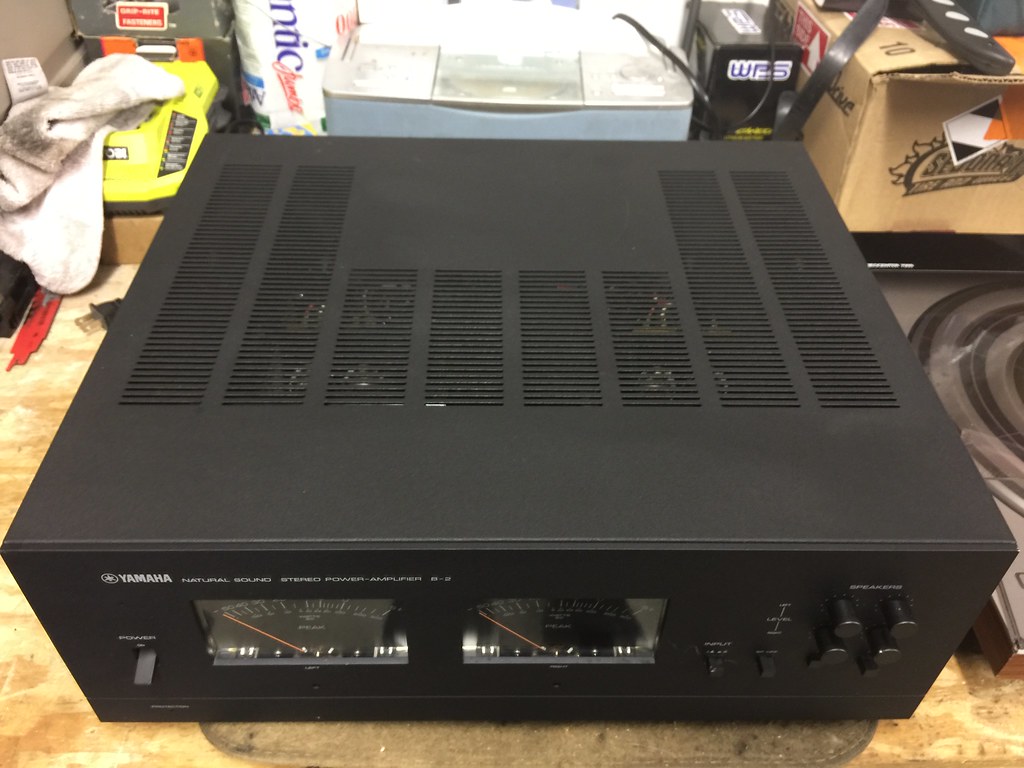
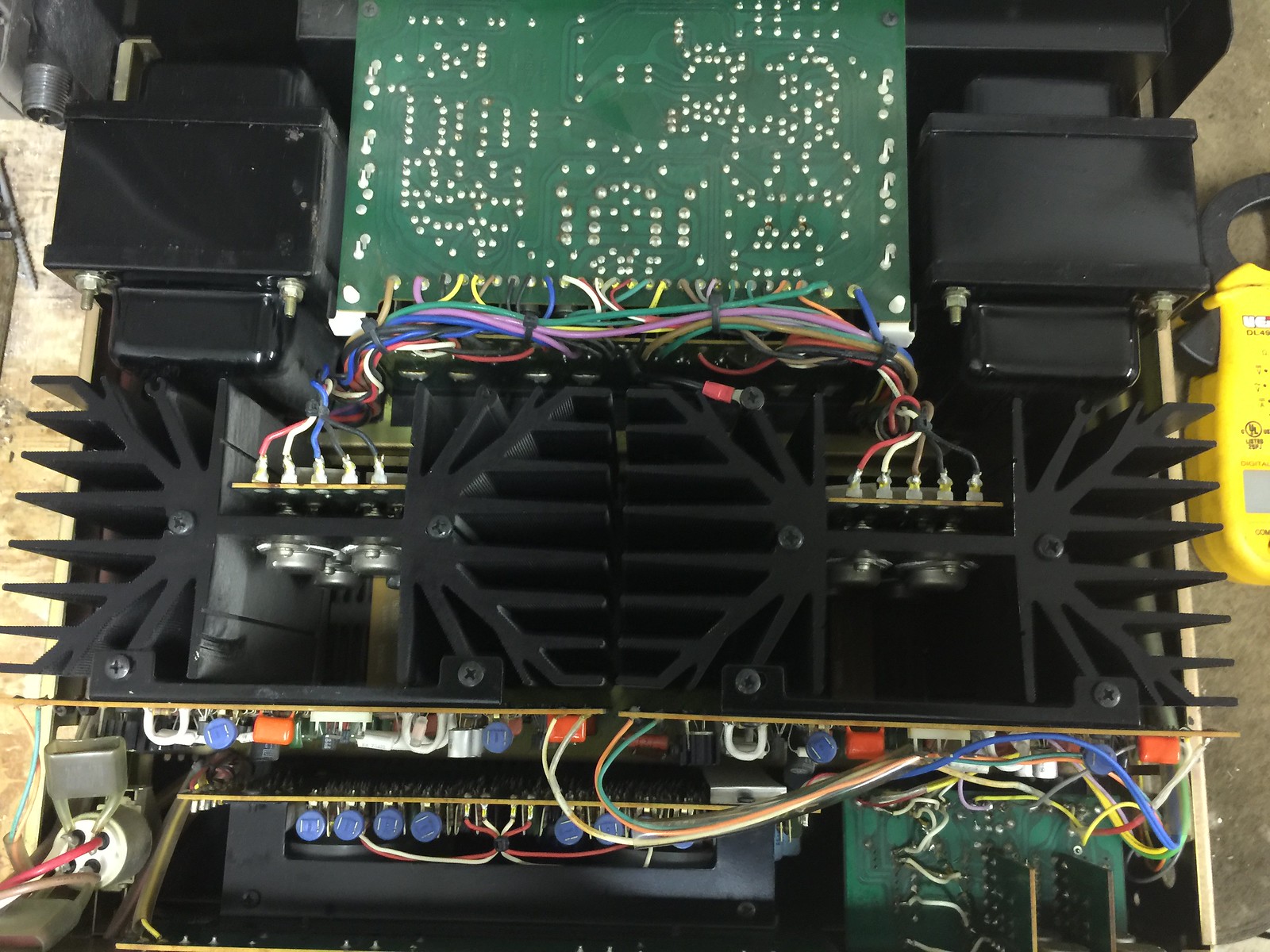
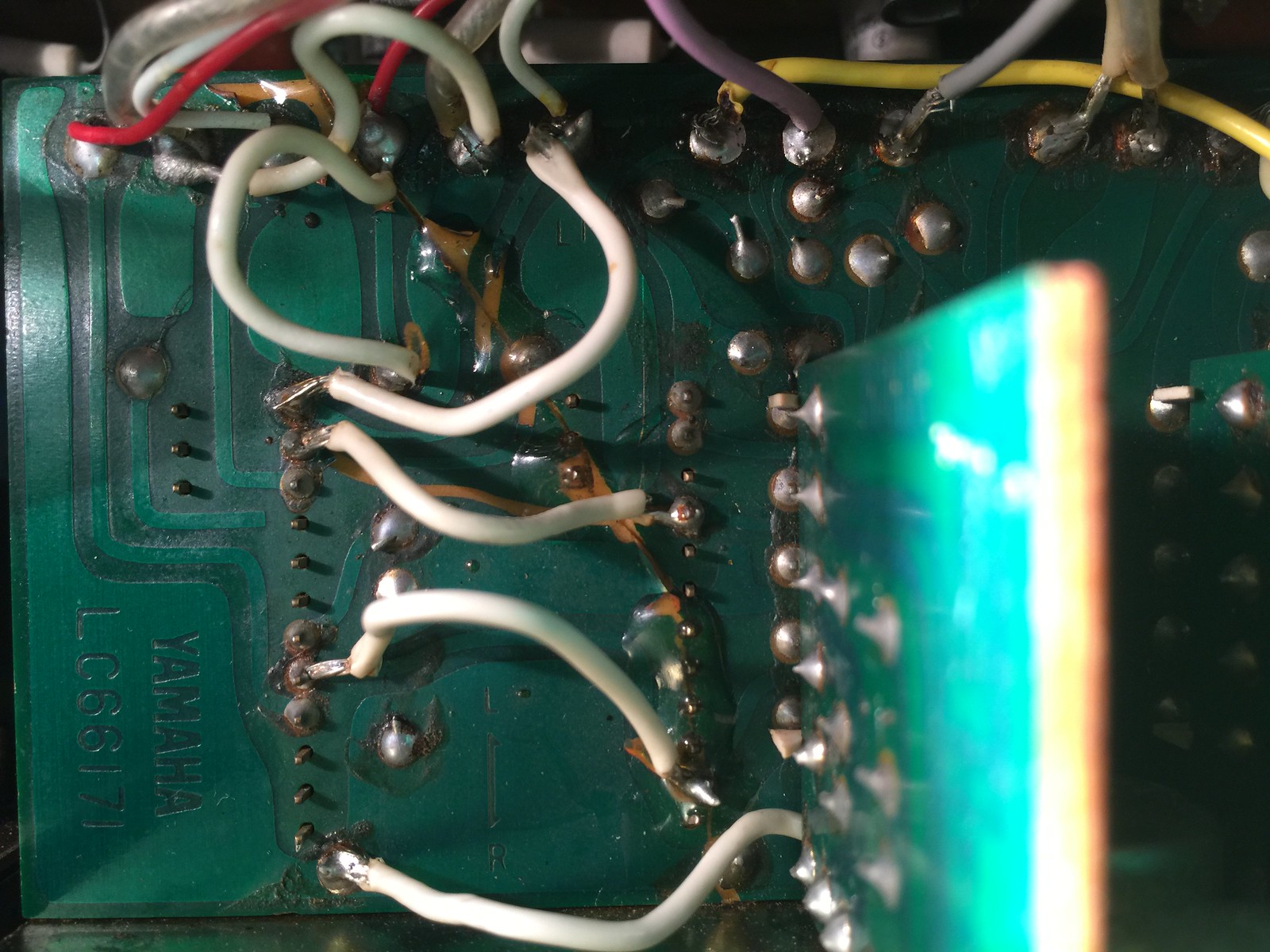
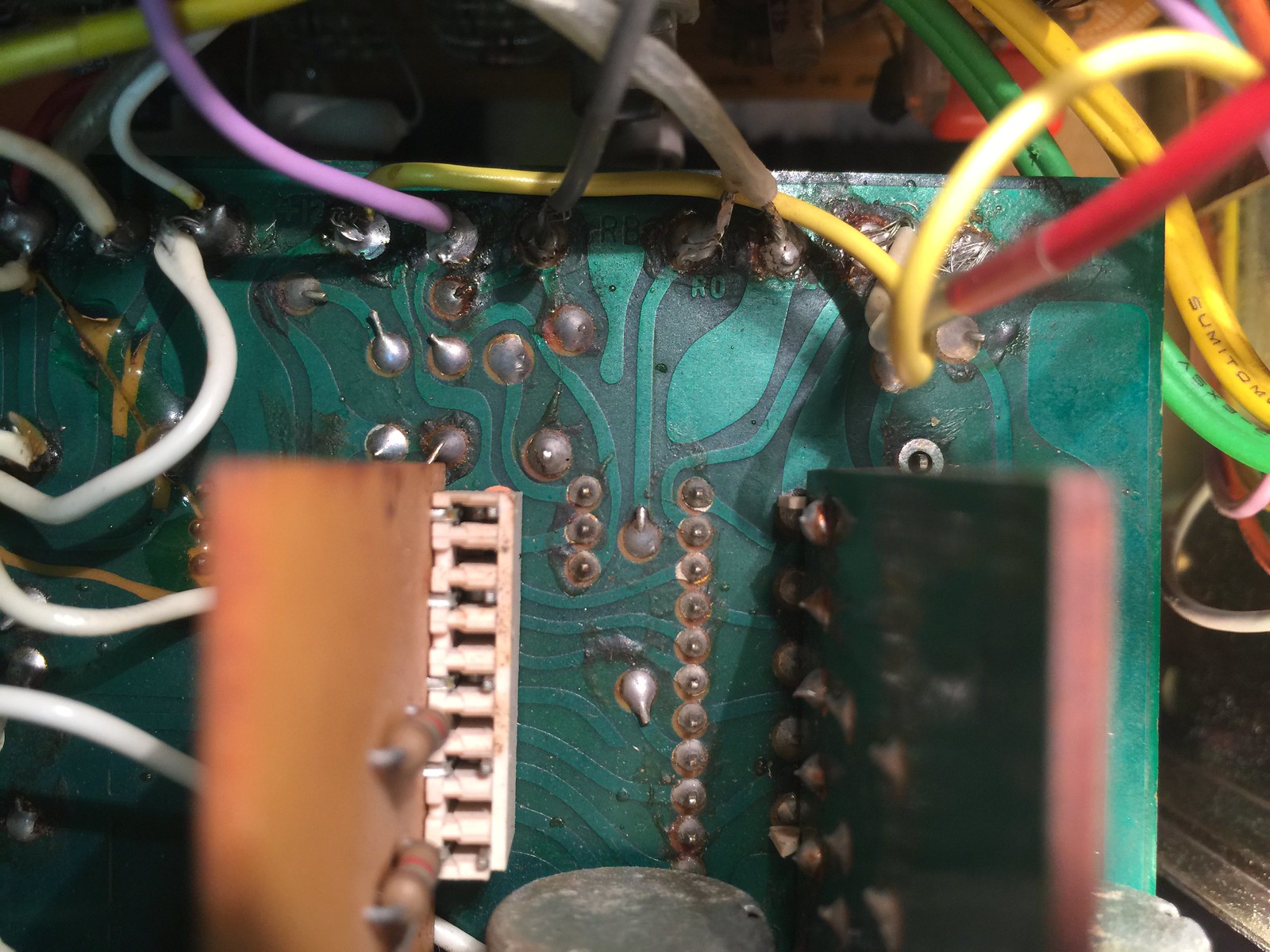

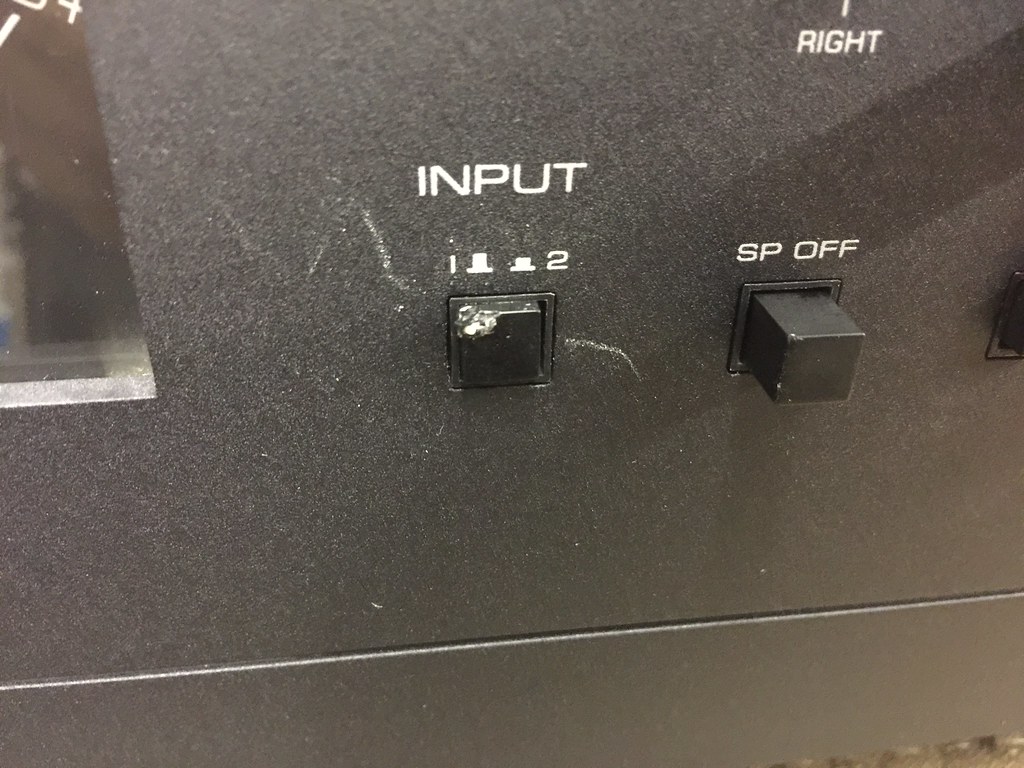
I traded for this amp with a spare Sony G-90 CRT Projector i had and drove to Fond Du lac Wisconsin from Buffalo NY to deliver the projector and pick up the amp. Stoped at the Harley Davidson Museum as well
The input board looks to be cracked in a few spots and Jerry rigged with wires to get it to work. The Switch doesn't spring back and I it does nothing according to the seller. He said he got it from the previous owner who said it sat for over 20 years till recently. I was told it worked after he fiddled with the switch/Board.
I was thinking of making a new board with new switches since I have read that the originals are no longer
available. In the mean time I was going to do the direct input mod just to get it working while I work on designing the new input board . Or should I not make a new board and just go with the direct input mod?
I want to also make sure the V-fets are ok and eventually do a complete restoration. But before i buy all the parts I want to give it a listen and get familiar with the sound and while listening to music go over the service manual and schematics and get familiarized with those as well as the sound
So How do i test the V-fets to see if they are ok? Is it the same method as the Sony V-fets which I have experience with after restoring a Sony TA-4650 with replacement V-fets .
And should I try to turn it on as is and see if I can get it working or would the damaged input board possible cause the death of the V-fets.
Opinions and advice much appreciated .
Here awesome pics ( 1600 x1200) and thanks in advance !!!




















